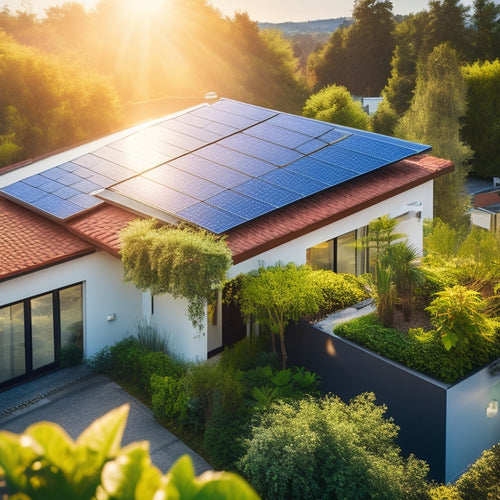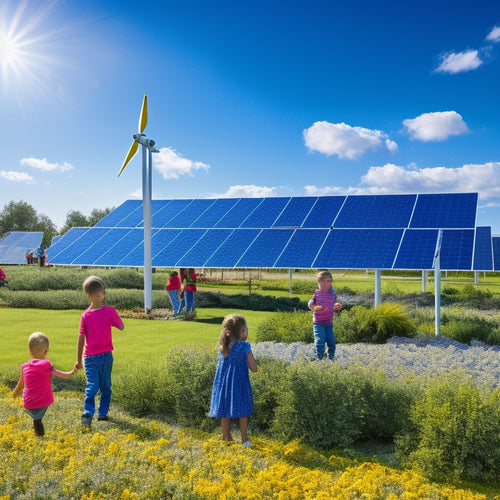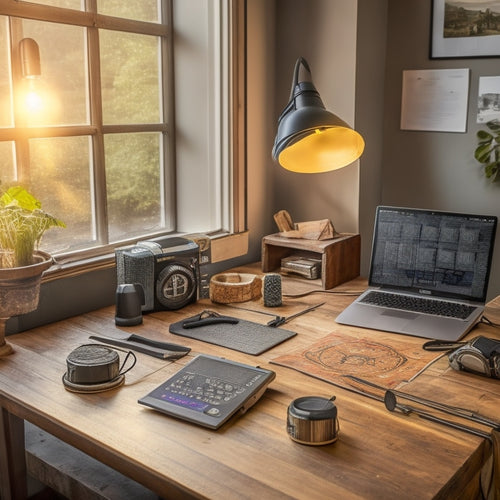What's the Cost of Solar Installation in 3 Steps?
Share
To get an accurate estimate of the cost of solar installation, you'll need to follow a 3-step process. First, you'll need to assess your energy consumption by reviewing your past utility bills to determine your total electricity usage in kilowatt-hours annually. Next, you'll need to evaluate the installation costs, including equipment quality, labor, permits, and incentives like the federal solar investment tax credit. Finally, you'll calculate your total savings by factoring in upfront costs, ongoing expenses, and long-term benefits like reduced energy bills and increased property value - and that's just the starting point for uncovering the full image of your solar installation costs.
Key Takeaways
- Assess your energy consumption by reviewing past utility bills to determine the correct system size for your solar power installation.
- Calculate installation costs, including equipment, labor, permits, and incentives, to determine the upfront investment required.
- Factor in total savings from reduced energy bills, local incentives, and increased property value to determine the long-term benefits.
- Consider federal and state-specific incentives, such as tax credits and rebates, to reduce the initial installation cost.
- Explore financing options, like loans and power purchase agreements, to make solar installation more affordable and accessible.
Understanding Your Energy Needs
Determine your energy consumption to get an accurate estimate of the solar power system you need. Your energy consumption is the total amount of electricity your home or business uses in a year. You can find this information on your past utility bills or by contacting your utility company.
Knowing your energy consumption is vital in system sizing, as it determines the number of solar panels and the capacity of the inverter required to meet your energy needs.
To calculate your energy consumption, add up the total kilowatt-hours (kWh) used in a year. You can also consider your energy usage patterns, such as peak hours, to guarantee the system can handle your maximum energy demand.
Be sure to account for any energy-intensive appliances or equipment that may not be reflected in your past energy usage.
Accurate system sizing is essential to guarantee your solar power system provides the energy you need while minimizing waste and excess capacity.
Assessing Installation Costs and Incentives
Now that you've calculated your energy consumption, you're ready to investigate the financial aspects of going solar. Evaluating installation costs and incentives is a vital step in determining the feasibility of solar power for your home or business.
When examining installation costs, consider factors such as the type and quality of equipment, installation company, and labor costs. The cost of solar panels, inverters, and mounting systems can vary greatly depending on the brand, warranty, and efficiency.
Additionally, permits, inspections, and interconnection fees with your utility company will add to the overall cost.
Fortunately, there are incentives to offset these costs. The federal solar investment tax credit (ITC) allows you to claim a percentage of your total installation costs as a tax credit.
Furthermore, state incentives, such as rebates, tax credits, or property tax exemptions, can further reduce your upfront costs. Research the installation factors and incentives specific to your location to get an accurate estimate of your solar installation costs.
Calculating Your Total Savings
Calculating Your Total Savings
Break down your total savings by factoring in the upfront costs, ongoing expenses, and long-term benefits of going solar. You'll want to evaluate how much you'll save on your electricity bills, as well as any financing options that can help offset the initial investment.
Some key factors to take into account when calculating your total savings include:
-
The amount of electricity your solar panel system will generate, and how that translates to reduced energy bills
-
The local incentives and tax credits available to you, which can greatly reduce your upfront costs
-
The long-term benefits of solar, such as increased property value and potential selling points for your home
- The financing options available to you, such as loans or power purchase agreements, which can make going solar more affordable
Frequently Asked Questions
Can I Install Solar Panels on My Own?
You can attempt a DIY installation, but be prepared to maneuver through complex solar permits and local building codes, which can be time-consuming and may void your warranty or even lead to safety hazards if not done correctly.
How Long Does a Typical Solar Panel Last?
You're wondering how long your solar panel will shine bright, like a diamond in the rough. Typically, a solar panel lasts around 25-30 years, with its solar energy efficiency decreasing by 0.5-1% annually, ensuring a long and steady supply of power.
Are There Any Maintenance Costs for Solar Panels?
You'll need to budget for solar maintenance, including panel cleaning, which can cost around $300 to $1,000 per year, depending on the system's size and location, to guarantee peak energy production and extend the panels' lifespan.
Can I Sell Excess Energy Back to the Grid?
You can sell excess energy back to the grid through net metering, benefiting from credits on your utility bill, but you'll need to guarantee your system meets grid connection requirements, such as installing a specialized inverter and meter.
Will Solar Panels Increase My Property Value?
You'll be delighted to know that, yes, solar panels can enhance your property's appeal, leading to a higher property appraisal, as they're seen as a significant asset, improving energy efficiency and your home's overall desirability.
Conclusion
You've made it to the finish line! After understanding your energy needs, evaluating installation costs and incentives, and calculating your total savings, you're now ready to reap the benefits of solar installation. And the best part? You'll be saving a small fortune - think thousands of dollars over the next decade! By investing in solar, you'll be utilizing the power of the sun to fuel your home, and your wallet will thank you.
Related Posts
-

Solar Power Systems for Cost-Effective Sustainability
Investing in solar power systems is a smart move for cost-effective sustainability. You can save about $1,500 annuall...
-

Solar Power for Community Energy Independence
Solar power is essential for your community's energy independence, offering both environmental and economic benefits....
-

Solar Inverter Troubleshooting for Beginners
Troubleshooting your solar inverter starts with understanding its efficiency and performance metrics. Check for prope...


